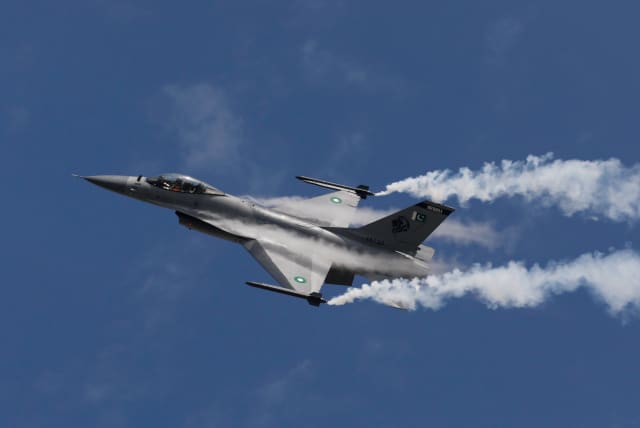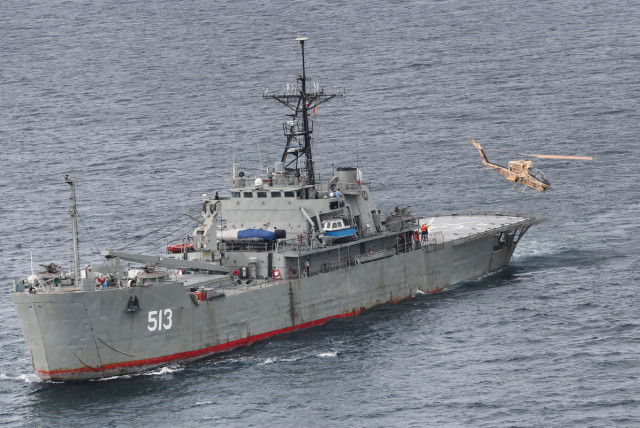US sends F-16s to Middle East after F-22s as sign of strength in region - analysis

The planes can fly over the Gulf and make ships feel safe, but it’s unclear what the planes will do if Iran continues to try to hijack ships.
The US sent F-16s to the Middle East to help protect ships in the Strait of Hormuz and the Persian Gulf, according to reports.
The Associated Press said “the US is beefing up its use of fighter jets around the strategic Strait of Hormuz to protect ships from Iranian seizures, a senior defense official said Friday, adding that the US is increasingly concerned about the growing ties between Iran, Russia and Syria across the Middle East.” This comes in the wake of June reports about the US sending F-22 fighter jets to the region.
Al-Arabiya noted that “Washington has been flying A-10 fighter jets over the Strait of Hormuz for the last week and it will be sending a new fleet of F-16s to the Gulf this weekend in response to the recent uptick in Iranian efforts to seize oil tankers, a senior US military official said Friday.” This means that the US now has more planes in the region which should be more than capable of defending ships. However, a key question is what rules of engagement the planes have and how they will actually be used.
Motivations behind sending the crafts
These are not the only planes the US has recently said it sent to the region. It also sent advanced F-22 air superiority fighter planes. However, those were ostensibly sent due to tensions with Russia in Syria. This means the US is deeply committed to the region, despite some perceptions that the US has been shifting focus to China and Russia.
Iran and Russia nevertheless continue to test US resolve. Russia has been increasing various types of dangerous interaction in Syria. Both the US and Russia operate in Syria. The US generally operates in the east of the country, backing the SDF against ISIS, and over a lonely garrison called Al-Tanf in Syria near the Jordan-Iraq border. In the past there have been tensions with Russia, Iran and the Syrian regime. However, Russia has now increased those tensions.
The F-16s are apparently being sent to help bolster forces over the Gulf. “The defense official, who spoke on condition of anonymity to provide details of military operations in the region, said the F-16s will give air cover to the ships moving through the waterway and increase the military’s visibility in the area, as a deterrent to Iran,” the AP noted.
“A-10s have been flying over the Strait of Hormuz and over the broader [Gulf] areas for about a week and a half now. And we are starting to fly f-16s this weekend, as well, to further robust that presence,” a US official, speaking on condition of anonymity, told reporters, Al-Arabiya said.
The planes can fly over the Gulf and make ships feel safe, but it’s unclear what the planes will do if Iran continues to try to hijack ships. Iran tried to hijack two ships last week. It has hijacked many other ships since 2019 and carried out attacks using drones and mines. Iran uses fast boats to harass ships and sometimes uses helicopters to send men to rope down onto the bridge of ships it intends to capture.
Other US crafts in the region
The US has also been using drones in Syria, to hunt ISIS and conduct other operations. One report recently said Russia harassed several US drones, apparently in northwest Syria. The very fact that several Reaper drones were flying at the same time in the same place shows how large the drone presence is.
In addition US Central Command recently completed a drill with the IDF under the overall exercise called Juniper Oak in which the US said demonstrated “increasing interoperability and enhancing combined operational capabilities in the air and cyberspace.” Within the last week the US also partnered with Jordan as part of Intrepid Maven, and conducted operations in the Arabian Gulf with Bahrain, Kuwait, Saudi Arabia and the UK as part of a multinational force. CENTCOM also said it worked with Lebanon and Iraqi forces as part of the exercise Resolute Union 2023. Adding all this together clearly shows a very high level of US operations in the region in the recent period.
Jerusalem Post Store
`; document.getElementById("linkPremium").innerHTML = cont; var divWithLink = document.getElementById("premium-link"); if (divWithLink !== null && divWithLink !== 'undefined') { divWithLink.style.border = "solid 1px #cb0f3e"; divWithLink.style.textAlign = "center"; divWithLink.style.marginBottom = "15px"; divWithLink.style.marginTop = "15px"; divWithLink.style.width = "100%"; divWithLink.style.backgroundColor = "#122952"; divWithLink.style.color = "#ffffff"; divWithLink.style.lineHeight = "1.5"; } } (function (v, i) { });

